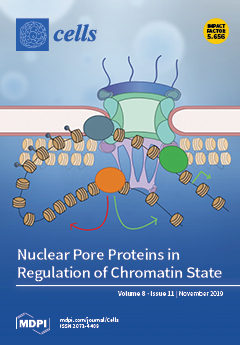Human biliary tree stem/progenitor cells (hBTSCs), reside in peribiliary glands, are mainly stimulated by primary sclerosing cholangitis (PSC) and cholangiocarcinoma. In these pathologies, hBTSCs displayed epithelial-to-mesenchymal transition (EMT), senescence characteristics, and impaired differentiation. Here, we investigated the effects of cholest-4,6-dien-3-one, an oxysterol involved
[...] Read more.
Human biliary tree stem/progenitor cells (hBTSCs), reside in peribiliary glands, are mainly stimulated by primary sclerosing cholangitis (PSC) and cholangiocarcinoma. In these pathologies, hBTSCs displayed epithelial-to-mesenchymal transition (EMT), senescence characteristics, and impaired differentiation. Here, we investigated the effects of cholest-4,6-dien-3-one, an oxysterol involved in cholangiopathies, on hBTSCs biology. hBTSCs were isolated from donor organs, cultured in self-renewal control conditions, differentiated in mature cholangiocytes by specifically tailored medium, or exposed for 10 days to concentration of cholest-4,6-dien-3-one (0.14 mM). Viability, proliferation, senescence,
EMT genes expression, telomerase activity, interleukin 6 (IL6) secretion, differentiation capacity, and
HDAC6 gene expression were analyzed. Although the effect of cholest-4,6-dien-3-one was not detected on hBTSCs viability, we found a significant increase in cell proliferation, senescence, and IL6 secretion. Interestingly, cholest-4.6-dien-3-one impaired differentiation in mature cholangiocytes and, simultaneously, induced the EMT markers, significantly reduced the telomerase activity, and induced
HDAC6 gene expression. Moreover, cholest-4,6-dien-3-one enhanced bone morphogenic protein 4 (Bmp-4) and sonic hedgehog (Shh) pathways in hBTSCs. The same pathways activated by human recombinant proteins induced the expression of EMT markers in hBTSCs. In conclusion, we demonstrated that chronic exposition of cholest-4,6-dien-3-one induced cell proliferation, EMT markers, and senescence in hBTSC, and also impaired the differentiation in mature cholangiocytes.
Full article






